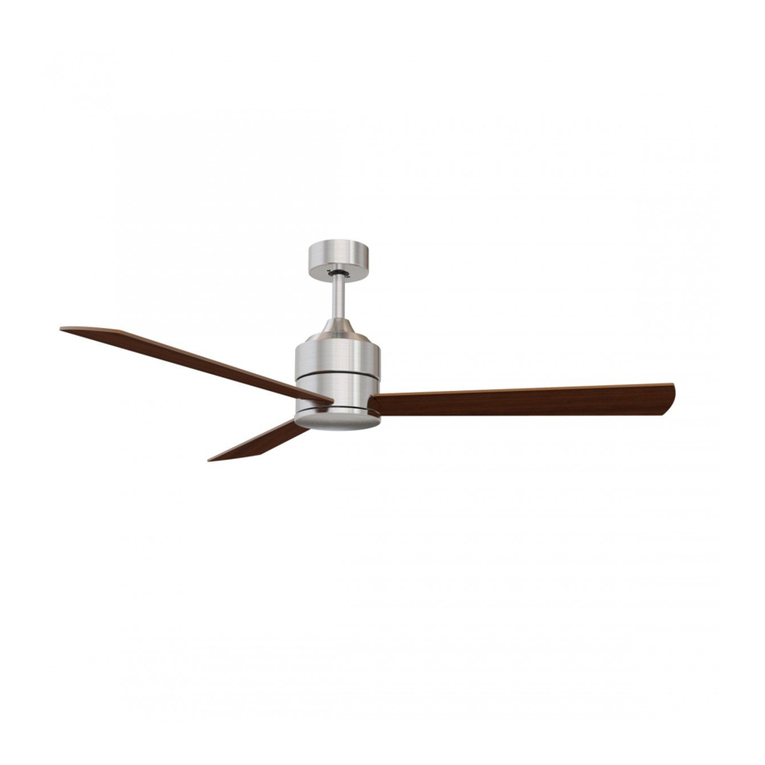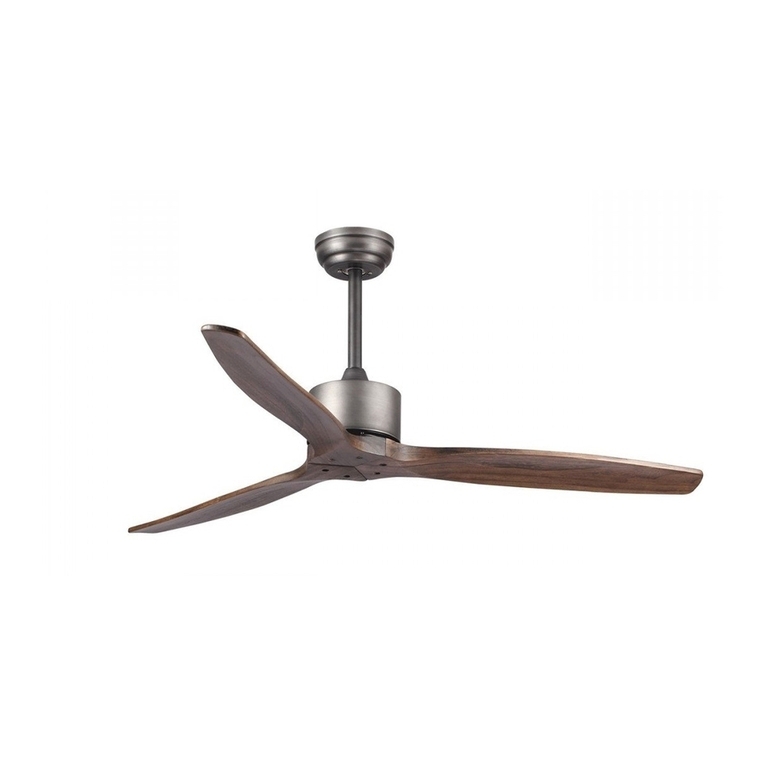
hofflights.com
10
MANUAL DE INSTALACIÓN
PASCUA
IMH-104 v.01
RESOLUCIÓN DE PROBLEMAS
1. Verifique todos los fusibles o magnetotérmico. Sustituya los que falten.
2. Apague la corriente eléctrica y verifique todas las conexiones de los cables del ventilador y del interruptor.
1. Puede que el ventilador esté girando en sentido contrario por lo que el aire se va hacia arriba. (Modo invierno)
2. Puede que la habitación tenga elementos que obstruyen el flujo del aire.
3. Puede que el ventilador sea demasiado pequeño para la habitación.
1. Una oscilación leve es considerada como aceptable y no debería ser considerada
como un defecto El uso de cualquier kit de luz, especialmente uno grande con 4 o 5
bombillas provocará habitualmente una oscilación.
2. Asegúrese de que el soporte de fijación esté apretado a la caja de empalme/al techo
y de que no se mueva en absoluto. Apriete los tornillos de ser necesario.
3. Asegúrese de que todos los tornillos que retienen las y el bloque motor estén apre-
tados. Asegúrese de que los tornillos de kit de luz/del cristal estén apretados.
4. Un movimiento leve es normal. Sin embargo, intercambiar un par de aspas adyacen-
tes (lado a lado) puede repartir el peso para obtener un mejor funcionamiento.
5. Si un kit de equilibrado es proporcionado, utilícelo si necesario.
1. Deje siempre unos días a su ventilador para que “se adapte” a velocidad mediana o alta. Intente identificar la proce-
dencia exacta del ruido escuchando atentamente desde diferentes ángulos (Aspas, motor, kit de luz, etc.). El ruido del
ventilador puede proceder del kit de luz.
2. Asegúrese de que todos los tornillos de montaje del ventilador y del kit de luz estén bien apretados y correctamente
enroscados. De no ser así, retírelos y vuélvalos a apretar. Apriete estos tornillos al menos una vez al año porque
pueden irse soltando poco a poco con el tiempo y provocar un chasquido.
3. Asegúrese de que el kit de luz esté firmemente apretado en el ventilador y que todos los tornillos del cristal estén
apretados sólo manualmente. No se deben de apretar con un destornillador.
4. Asegúrese de que el soporte de fijación esté perfectamente enganchado a la caja de empalme.
5. Asegúrese de que las tuercas para cables de la caja eléctrica o de la cubierta no se golpeen entre sí o contra la caja de
pared. Envuélvalos en cinta aislante de ser necesario.
6. El uso de un reostato estándar o de un control de pared variable provocará siempre distorsiones armónicas o un
zumbido. Muchos motores de ventiladores no funcionan en silencio con un control de pared variable. Si desea utilizar
un control de pared silencioso, use únicamente los que sean certificados y de 3 velocidades.
7. Asegúrese de que el florón no esté tocando el techo.
8. Compruebe que los tornillos de las aspas al bloque motor estén apretados y que las arandelas previstas para tal
efecto hayan sido usadas.
9. Asegúrese de que todas las bombillas estén bien enroscadas.
EL VENTILADOR NO ARRANCA:
EL VENTILADORPERO NO MUEVE MUCHO AIRE:
EL VENTILADOR TIEMBLA U OSCILA:
EL VENTILADOR HACE RUIDO:
Touching
ceiling






























